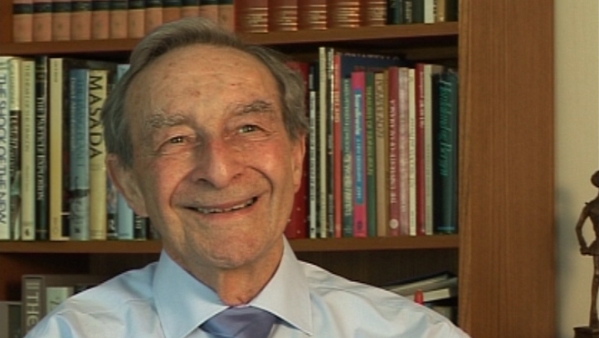NEXT STORY

Opening up the metalloborane compound field
RELATED STORIES

NEXT STORY

Opening up the metalloborane compound field
RELATED STORIES


|
Views | Duration | |
|---|---|---|---|
| 181. Deciding to give up my work in Mössbauer spectroscopy | 44 | 02:09 | |
| 182. Boron hydride problems: how to measure reactions? | 44 | 04:15 | |
| 183. Our experiments to measure the different boron hydrides | 39 | 02:39 | |
| 184. Opening up the metalloborane compound field | 43 | 02:36 | |
| 185. Working with stable metalloboranes | 41 | 01:07 | |
| 186. Creating conjuncto-boranes | 45 | 01:50 | |
| 187. Other responsibilities of being Head of Department | 32 | 01:23 | |
| 188. Open days | 28 | 02:02 | |
| 189. The first open day at Leeds University | 33 | 02:42 | |
| 190. Deciding who discovered each element | 41 | 06:33 |


So we rigged up an apparatus which essentially consisted of a glass reaction vessel which was surrounded by a heating element and an oven, and that oven was thermostated at successive temperatures, kept constant... and then this reaction flask was connected by a lead to the mass spectrometer, and at intervals during the reaction we would bleed some of the gas, a minute fraction, into the mass spectrometer which was immediately analysed and give us all the masses which were present and their concentrations by the height of the peaks. So we had all this information and the problem was how to deconvolute it and make it into compounds because we had to, as I say, discern the difference between a B10H and a B11 and so forth. And it turns out that the mathematics for doing this was very similar to the mathematics that was required to deconvolute the Mössbauer spectra, so although the two subjects seem miles apart, the way of reducing the data to something intelligible was fairly similar. And so, as I said, we had Terry Gibbs initially to help us with the mathematics of this, and we found that we could follow the course of the reaction – and again there’s no need to go into detail – but the method worked and we were able to, I think, give a reasonable explanation for how each of the various boron hydrides was formed and having been formed then subsequently reacted to form other boron hydrides... to the total that we could get right through the whole range of the simple boron hydrides, the first ten of them.
So that was a thing that we did with the... with the mass spectrometer and the gas phase reactions, and I was able to talk about this at several of the conferences and we wrote some of it up in full papers as well.
Norman Greenwood (1925-2012) was born in Australia and graduated from Melbourne University before going to Cambridge. His wide-ranging research in inorganic and structural chemistry made major advances in the chemistry of boron hydrides and other main-group element compounds. He also pioneered the application of Mössbauer spectroscopy to problems in chemistry. He was a prolific writer and inspirational lecturer on chemical and educational themes, and held numerous visiting professorships throughout the world.
Title: Our experiments to measure the different boron hydrides
Listeners: Brian Johnson
Professor Brian FG Johnson FRS, FRSE, FRS Chem, FAcad Eu, FAS. Professor of Inorganic Chemistry University of Edinburgh 1991-1995, Professor of Inorganic Chemistry University of Cambridge 1995-2005, Master Fitzwilliam College Cambridge 1999-2005. Research interests include studies of transition metal carbonyls, organometallic chemistry, nano- particles and homogeneous catalysis. Professor Johnson is the author of over 1000 research articles and papers.
Tags: Terry Gibbs
Duration: 2 minutes, 39 seconds
Date story recorded: May 2011
Date story went live: 25 November 2011